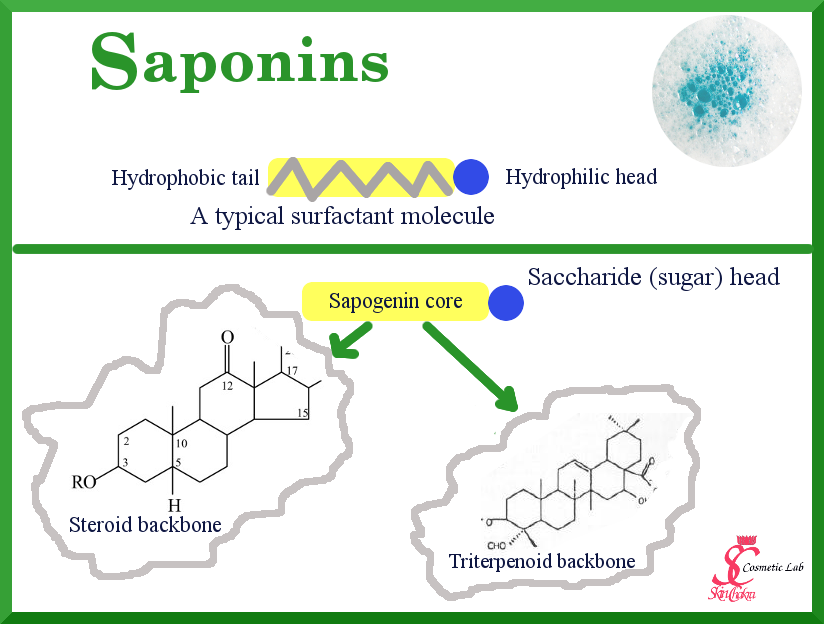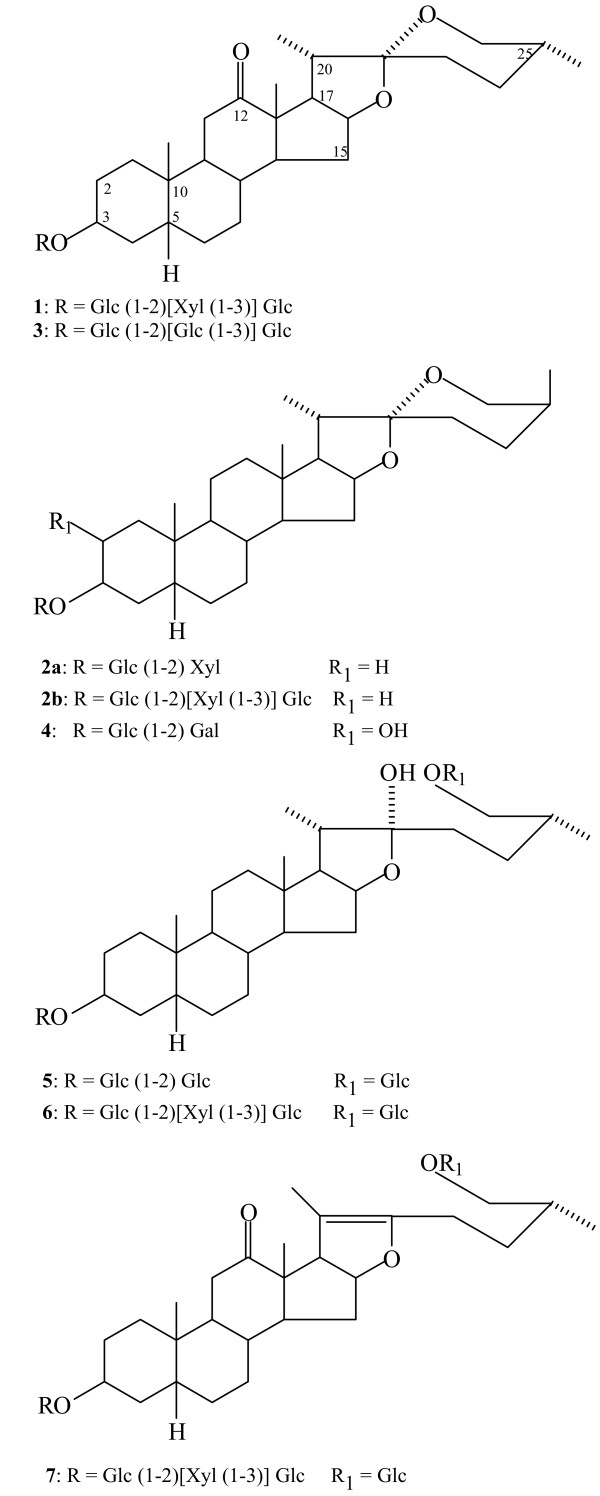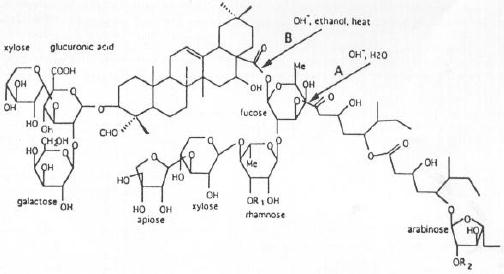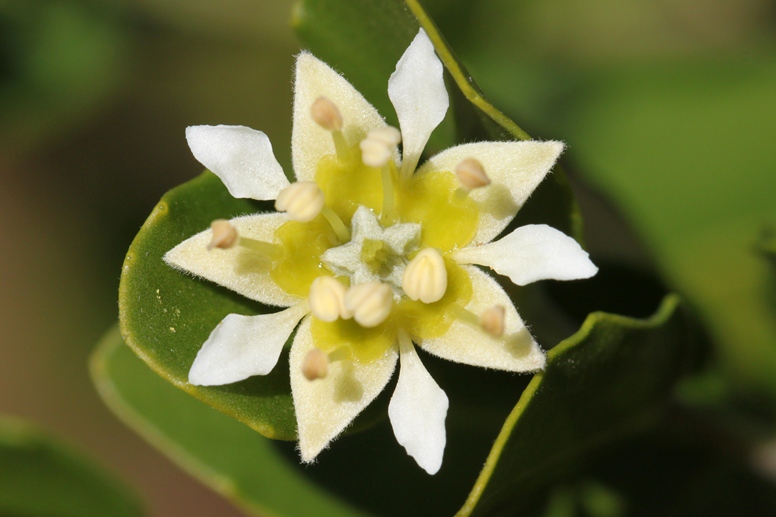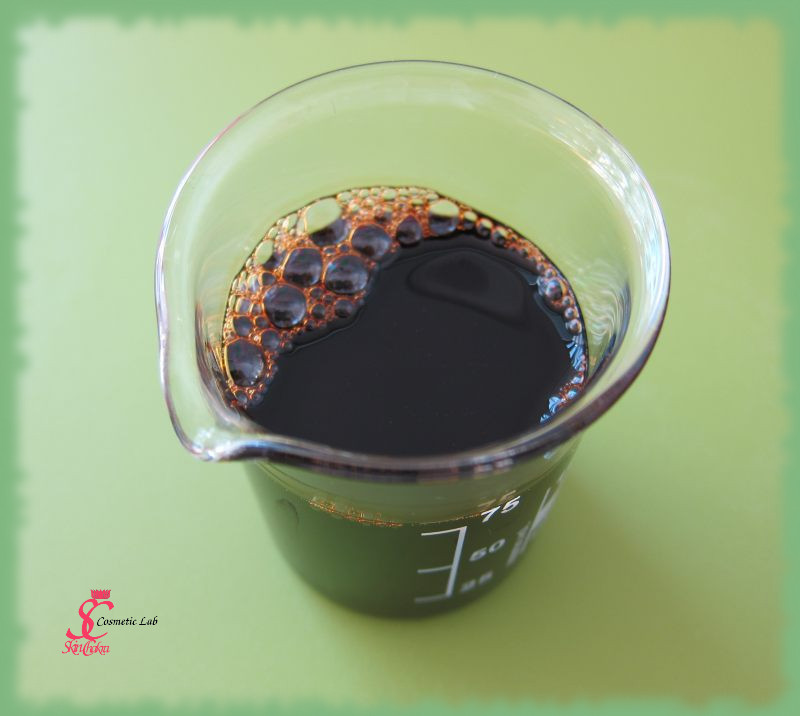 What looks like a beaker of coca (or dark beer) in this photo is a solution of Quillaja extract in water. A Saponin containing extract and a very promising ingredient for natural personal care and cosmetics
What looks like a beaker of coca (or dark beer) in this photo is a solution of Quillaja extract in water. A Saponin containing extract and a very promising ingredient for natural personal care and cosmetics
Dienstag, 11. August 2015
Let it foam: Saponins for natural cosmetics
I'm going to publsih a bunch of "natural" cleansing formulations little by little but I want to first start with a little bit theory and I promise to keep it simple and don't bore you with too much details.
"Saponins", as the name may reveal, are phytochemicals found in many plants. They are called saponins because they foam in water and because they are surfactants. Like any other plant material and phytochemical, they can both "kill & heal" and they are being applied in medicine, pharmacy, nutrition, beverages (soft drinks, wine, beer), cosmetics and even in some industrial fields such as mining, mineral extraction etc. There are hundreds of scientific articles (and I mean peer reviewed real research articles and no commercial and promotional pseudo-scientific stuff) reviewing their anti-inflammatory, cholesterol reducing and anti-diabetic and immuno-stimulating functions. For cosmetic chemists however, they are interesting as "natural" and plant derived surfactants, foaming ingredients, humectants, anti-inflammatory and anti-bacterial agents. Before going into detail about their sources and applications, let us talk about surfactants.
As you many know "surfactants", coming from "surface active agents" are molecules with both a hydrophilic and a hydrophobic part. This means, the molecules are active at the interphase (water-oil, oil-air, water-air etc.). Thank to this unique property, to be able to orient at the interphase (in simple words: being soluble both in water and in oil), surfactants are applied in almost every branch of science and engineering from paints and mineralogy to oil extraction, from food and feed industry to cosmetics and pharmaceuticals. Surfactants are the foaming ingredient in your shampoo. The natural soap you prepare by combining lye and fats is a surfactant. The emulsifier in your night cream as well as the emulsifier in your Mayonnaise are both surfactants. The chemical that helps separating precious metals from the ore is a surfactant, and so on.
Surfactants have generally a hydrophobic tale and a hydrophilic head. This structure allows them to orient at water-oil interphase. Saponins which are natural surfactants being present in beans, roots, leaves etc. have basically the same structure: A lipophilic (oil soluble) part and a hydrophilic (water soluble) part. But in saponins, these units are a little bit more complicated than in conventional surfactants.
In saponins, the lipophilic core is called "sapogenin". This is the "aglycone" or "glycoside-free" part of the molecule. Sapogenins are basically divided into two groups: Steroids and triterpenoids.
The hydrophilic part of saponins are one ore more branches of sugars "oligo-saccharides". This is the basic of the saponins.
Saponins are found in soybeans, alfalfa, fenugreek, garlic, kidney peas, oats and many other plants.
For our cosmetic purposes, two specific plants are very promising and are of commercial importance. Yucca schidigera growing in desert areas of California and Mexico and Quillaja saponaria (soapbark tree) growing in arid areas of Chile. Yucca saponins have an steroid backbone, whereas Quillaja saponins have a triterpenoid backbone.
Yucca extract contains hundreds of steroid saponins together with polyphenols, most of all resveratrol and stilbenes. It has been applied in folks medicine in Mexico for centuries for its anti-inflammatory and anti-arthritic functions.
Steroid saponins in yucca extract. Photo courtesy of Jornal of inflammation
Quillaja saponins have a triterpenoid back bone. The extract contains some 100 saponins, polyphenols, tanins, sugars and calcium.
Quillaic acid- Backbone of Quillaja saponins- Photo: courtesy of SÖFW Journal
Quillaja flower- Kind permission of Robert Siegel
Quillaja and yucca extracts, rich in saponins are quite promising ingredients for natural and organic cosmetics.
They are not only applied as foaming and cleansing ingredients into cleansing products such as shampoos, shower gels, facial cleansing products or bath foams, they are applied as anti-inflammatory, anti-acne.soothing and moisturizing ingredients into creams and lotions.
Their major advantage over other surfactants being currently applied and approved in natural cosmetics such as Cocamidopropyl betaine or Alkylpolyglycosides is that they formers are pure extracts without being processed at all (ecept for filteration or pasteurization) whereas the latters are only plant based but are being processed chemically, only all chemicals and processes are approved by certain certifications for natural cosmetics.
Their great advantage over "natural soap", the sodium or potassium salt of fatty acids is their electristatic neutrality. These saponins are considered nonionic surfactants and are stable over a broad range of pH whereas soap is considered as an anionic surfactant and by nature, it has a high pH which is much higher than the physiological skin pH. This high pH is a major drawback of soap in comparison to nonionic saponins. Another advantage of saponins over soap is the ease of application. No need for saponification, no need for heating and no need for ripening of soap, you can apply the product immediately after its preparation.
Keep an eye here and peep later for some exciting recipes and tutorials.
Till then,
BeHappy and have fun
Further reading:
Cheeke, P. R., S. Piacente, and W. Oleszek. "Anti-inflammatory and anti-arthritic effects of Yucca schidigera." Journal of Inflammation 3.6 (2006): 2012.
Rigano, L., N. Lionetti, and R. Othero. "Quillaja Triterpenic Saponins: The Natural Foamers." SÖFW-Journal 135.4 (2009).
Amazing fotos from Quillaja, its plantation and extraction in Chile by Robert Siegel
Sauvaire, Yves, et al. "Steroid saponins from fenugreek and some of their biological properties." Saponins used in food and agriculture. Springer US, 1996. 37-46.
Price, K. R., et al. "The chemistry and biological significance of saponins in foods and feedingstuffs." Critical Reviews in Food Science & Nutrition 26.1 (1987): 27-135.
Cornell university- Department of agriculture and feedstock: Plants Poisonous to Livestock
http://www.fs.fed.us/wildflowers/ethnobotany/soaps.shtml
http://www.pfaf.org/user/cmspage.aspx?pageid=49
